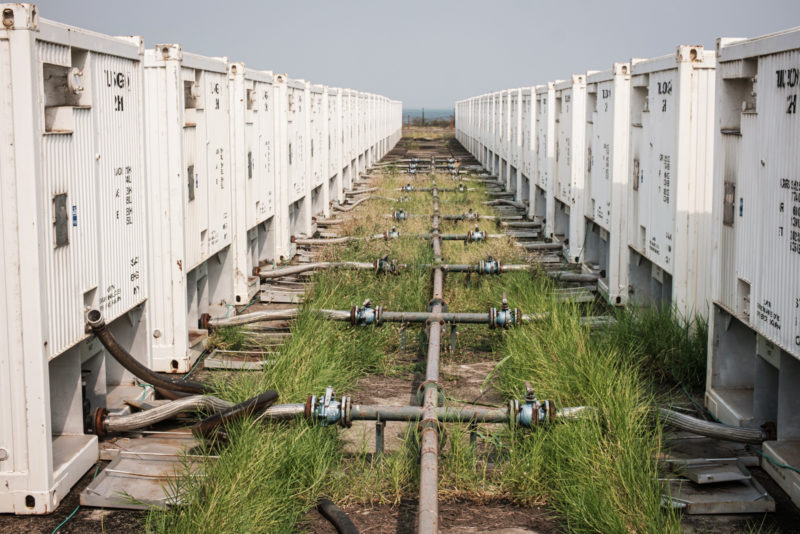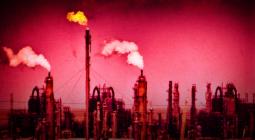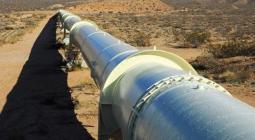A Major Oil Pipeline Project Strikes Deep at the Heart of Africa.

Despite the global plunge in oil prices, a major pipeline that would carry oil 900 miles across East Africa is moving ahead. International experts warn that the $20 billion project will displace thousands of small farmers and put key wildlife habitat and coastal waters at risk.
Imagine a tropical version of the Alaskan oil pipeline. Only longer. And passing through critical elephant, lion, and chimpanzee habitats and 12 forest reserves, skirting Africa’s largest lake, and crossing more than 200 rivers and thousands of farms before reaching the Indian Ocean — where its version of the Exxon Valdez disaster would pour crude oil into some of Africa’s most biodiverse mangroves and coral reefs.
Such a project is ready for construction, to bring to the world oil from new oil fields in the heart of Africa. It is the East African Crude Oil Pipeline.
The middle of a global pandemic, during which oil demand is in freefall and prices at rock bottom, might seem an odd moment to boost the world’s oil production. But the petrochemicals industry is always looking for new reserves to replace those being exhausted. And two oil fields discovered on the shores of Lake Albert, which straddles the border between Uganda and the Democratic Republic of the Congo, are currently among the biggest and cheapest new reserves available. They contain an estimated 6 billion barrels, roughly half the size of Alaska’s Prudhoe Bay field.
Construction work has begun at the Kingfisher and Tilenga oil fields, where the China National Offshore Oil Corporation and French giant Total intend to sink 500 wells. They have already spent an estimated $4 billion on infrastructure, and made enemies among local communities by grabbing land and providing paltry compensation.
NGOs estimate the carbon footprint of the oil from the pipeline, once burned, will be roughly that of Denmark.
But the wells still need a pipeline to get the oil to the outside world. To do that, the companies plan the world’s longest heated oil pipeline, stretching 900 miles from Lake Albert to Tanzania’s Indian Ocean port of Tanga. The pipeline will carry 216,000 barrels of crude oil a day, and will require heating to 50 degrees Celsius (122 degrees Fahrenheit), because the oil is low in sulphur and will otherwise solidify in the pipe. NGOs estimate the carbon footprint of the oil, once burned, will be roughly that of Denmark, and thousands of farmers will lose their land.
The companies claim they have resolved local environmental and social issues for the oil fields and pipeline, and that environmental and social impact assessments have given the $20 billion project a clean bill of health. Total, which is heading up the pipeline project, claims it consulted 58,000 people, and chose a route to “minimize the number of residents relocated.”
But local NGOs and international experts in environmental and social impact assessments disagree. They say that the environmental risks of the pipeline and production facilities are huge, and that consultations with communities amount to little more than what Oxfam-Uganda’s Gerald Byarugaba calls “box-ticking.”
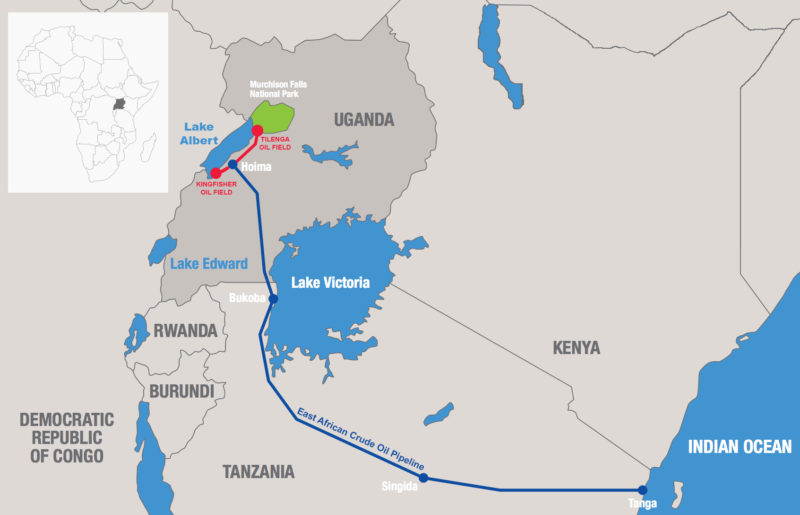
Yale Environment 360 has seen reviews of the impact assessments conducted by the Netherlands Commission for Environmental Assessment (NCEA), an independent body set up by the Dutch government. It found the assessments unquestioning on environmental issues, biased in balancing positive and negative impacts, “vague” on land ownership, and, in the case of the pipeline, “not fit for purpose.”
WWF Uganda, in a 2017 report, warned that the pipeline “is likely to lead to significant disturbance, fragmentation and increased poaching within important biodiversity and natural habitats” populated by elephants, lions, and chimpanzees that are on the international Red List of threatened species. It “has a greater environmental and social risk” than other pipelines planned in the region, said Paolo Tibaldeschi of WWF Norway, an author of the 2017 report. It is “longer, and crosses a hilly and seismic region near Lake Victoria, and several biodiversity habitats down to the coast,” he noted.
In Uganda, chimpanzee, hippopotamus, and crocodile populations will be at risk around Lake Albert, where the oil fields are. Total plans to sink 32 wells into the Tilenga oil field from within the Murchison Falls National Park, on the northeastern shore of the lake.
It is “not the ideal location of a multi-billion-dollar oil project,” says Romie Goedicke of the International Union for the Conservation of Nature in the Netherlands. Yet, she says, the Ugandan government and its partners are “seemingly unconcerned about the threat to biodiversity.”
On Lake Albert’s eastern shore, the NCEA’s analysis says the Kingfisher project leaves the future of the 400-square-kilometer Bugoma Forest — which has been protected for 90 years and has a large population of chimpanzees — “bleak.” The forest faces encroachment by pipelines, roads, an airport, and migrants who will come to work on the project and will likely clear land to grow crops and cut trees for charcoal.
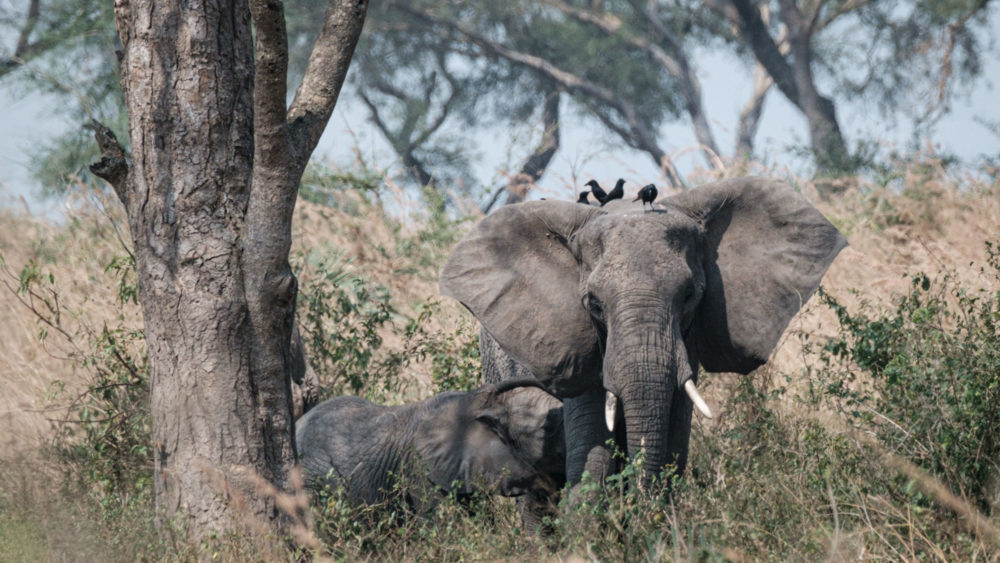
South of the lake, more chimpanzees will find the pipeline crossing their 88-square kilometer Taala Forest Reserve. Meanwhile, the NCEA also assesses as “bleak” the future of fish in the lake, which it says currently provides 30 percent of Uganda’s fish catch.
Across the border in Tanzania, the pipeline will bisect the Biharamulo game reserve, which contains one of the world’s last five populations of ashy red colobus monkeys, as well as hippopotami, elephants, zebras and, tour companies claim, mountain gorillas. Further east, it will traverse 32 kilometers of the Wembere Steppe, a seasonally flooded grassland known for its birdlife. Outside the reserves, WWF says, 510 square kilometers of elephant habitat is likely to be disrupted.
The 24-inch-wide pipeline will be buried to a depth of up to 2 meters for most of its journey, but its footprint on the landscape will still be large. For one thing, it will require more than 80 control stations along the route: for pumping, managing pressure, isolating potential leaks, and keeping the oil heated. Also, Total requires that a 30-meter-wide corridor of land above the pipeline is kept clear of buildings, trees, and crops, which will disrupt farms, ecosystems, and wildlife migration.
Beside the disturbance to wildlife habitat and farming, an additional threat is pollution from oil leaks.
For a third of its journey, the pipeline travels through the drainage basin of Lake Victoria, Africa’s largest lake and a source of the Nile, including passing close to its shoreline for 33 kilometers. The danger of oil leaks into the lake is increased by the risk of earthquakes, says WWF. In 2016, a 5.6-magnitude quake here killed 20 people and destroyed at least 900 buildings.
Two-thirds of the pipeline will pass through farmland, with an estimated 9,500-14,500 farms affected by construction in Tanzania alone.
The NCEA is particularly worried that the pipeline will cross an estimated 230 rivers. It questions the intention for the pipeline to cross rivers through open trenches on the river bed. These, it says, risk erosion that exposes the pipeline and causes “significant negative impacts, particularly in wetlands.”
But pollution risks may be greatest around the pipeline’s ocean terminal on the Chongoleani peninsula near the Tanzanian port of Tanga, where tankers up to 300 meters long will be loaded. “Transportation of oil will take place over mangrove and coral reef area,” where “intricate coastal environments make oil recovery and cleanup very difficult,” says WWF. Nearby, it points out, are two marine protected areas — the Pemba-Shimoni-Kisite reserve on the border with Kenya, and the Tanga Coelacanth marine park — which are noted for their coral reefs, dugongs, dolphins, and sea turtles.
The oil fields and pipeline also threaten local communities. The Chinese-run Kingfisher field will be built in a “small, formerly isolated area,” where local communities are heavily dependent on natural resources such as fish and firewood, says the NCEA. It says the impacts report is unclear on whether the company plans to compensate communities for loss of common grazing land and water sources; and it warns there could also be ethnic tensions between locals and Congolese migrant workers.
Two-thirds of the pipeline will pass through farmland. Total estimates that between 9,500 and 14,500 farms will be effected by construction in Tanzania alone. Thousands of households face being “economically displaced,” warns the NCEA.
The signs are not good. In Uganda, 7,000 people from 13 villages have already lost land in Hoima district, on the eastern shore of Lake Albert, to make way for infrastructure, including an airport to fly in equipment for the oil fields. Reuters in 2018 interviewed angry farmers required to give up their fields. “I don’t know where to go when this land is taken,” said 73-year-old James Mubona, whose 20 children and numerous grandchildren rely on his 22-acre farm. Many of those expelled now live in concrete houses in a resettlement village. They complain of cramped conditions, long walks to their new fields, and no room for their livestock.
Others claim they were cheated of cash compensation by local contractors who fabricated land valuations, failed to document all their buildings, and required them to fill out valuation forms in pencil. In January, a court in Nanterre, France, where Total is based, dismissed a case brought against the company by French and Ugandan NGOs, which claimed that the company was breaching its “duty of vigilance” in leaving the work to contractors. Total has stuck by its contractor policy, arguing that it is not responsible for the actions of its agents.
After a stuttering start, the two oil fields and the pipeline are reputedly ready to go. Uganda’s new energy minister, Mary Goretti Kitutu, is keen to push ahead and make the country sub-Saharan Africa’s fifth biggest oil producer. In January, the Tanzanian environment minister Mussa Azzan Zungu gave the pipeline an environmental certificate.
The financing appears firm. Last month, the African Development Bank denied NGO claims that it planned to offer funds to the project, noting that it was committed to supporting renewable energy projects. But two key investors, Japan’s Sumitomo Mitsui Bank and the South Africa-based Standard Bank remain on board.
A dispute among the corporate partners ended in April when Total bought out Tullow Oil, the UK company that originally discovered the oil reserves 14 years ago. This month, Tanzania’s energy minister Medard Kalemani announced that following the buyout, a final investment decision (FID) by the companies to go ahead with the project could be made in time for construction of the pipeline to begin in April 2021. It would be delivering crude in 2024.
The low global price of oil could be the last obstacle. But industry analysts say even continued low oil prices are unlikely to be a bar. The oil around Lake Albert is close to the surface and drilling conditions are easy, making production costs unusually low — just $20-25 per barrel for the Tilenga oil field. Even when government pipeline tariffs are added, Norway-based consultants Rystad Energy rated Tilenga oil the cheapest, as well as the biggest, new oil project on the continent.
The project remains “very competitive,” one local newsletter, East African Business Week, reported in late April. “While Total is following a global trend of drastically cutting expenses in light of Covid-19 pandemic and the collapse of oil demand and prices, the project’s economics make it one of the most likely to get FID in the near future.”
None of which alters the bottom line for environmentalists: whatever the price, further development of fossil fuel reserves is incompatible with the Paris climate agreement. As a letter from NGOs to the African Development Bank in March put it, “the reserves in currently operating oil and gas fields alone, even with no coal, would take the world beyond 1.5 degrees C” of warming. The last thing the world needs is more coming on line.
* Fred Pearce is a freelance author and journalist based in the U.K. He is a contributing writer for Yale Environment 360 and is the author of numerous books, including The Land Grabbers, Earth Then and Now: Amazing Images of Our Changing World, and The Climate Files: The Battle for the Truth About Global Warming.
